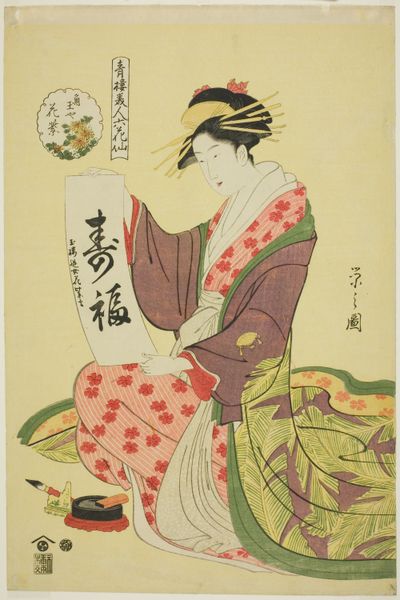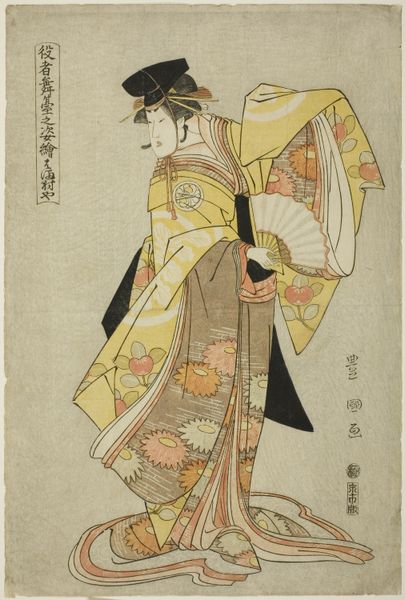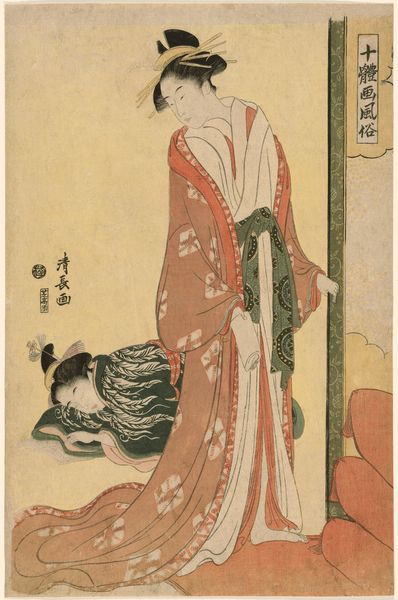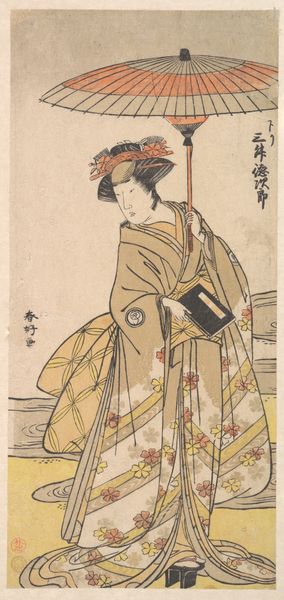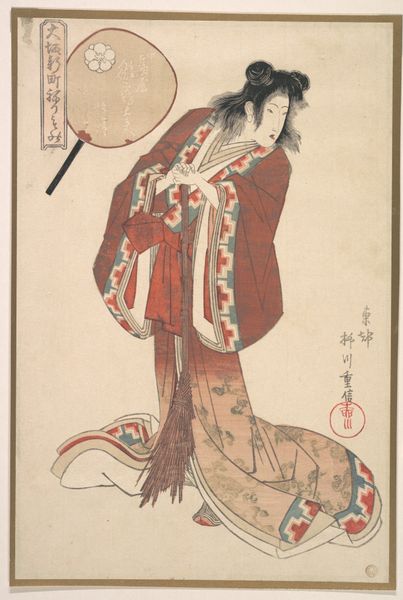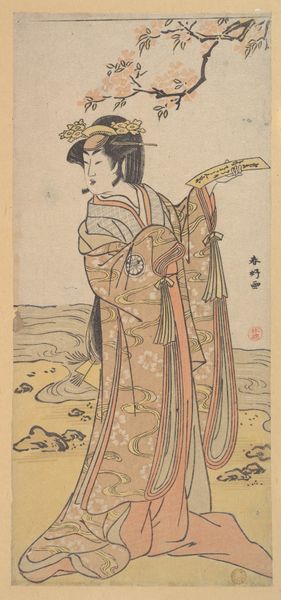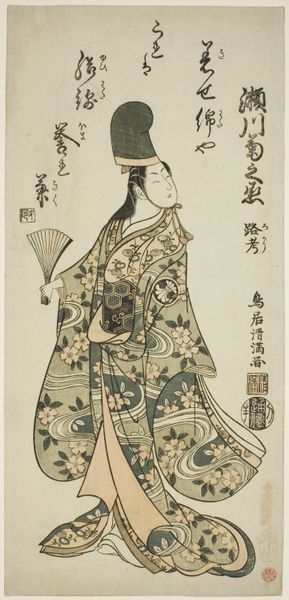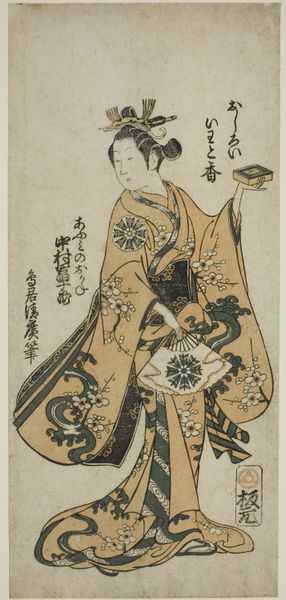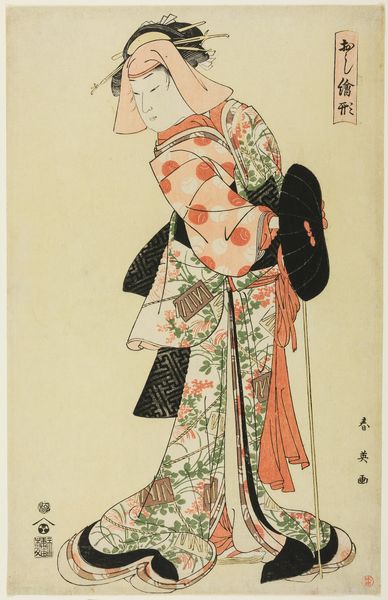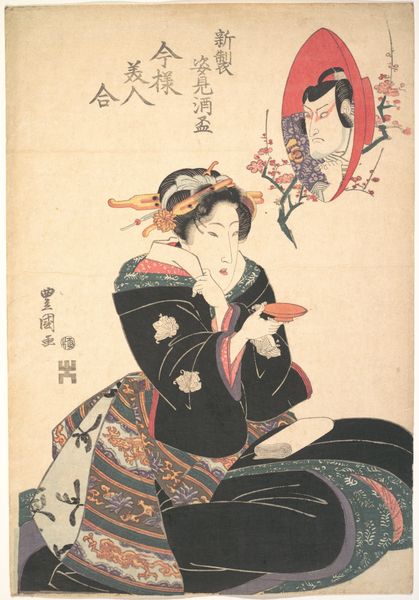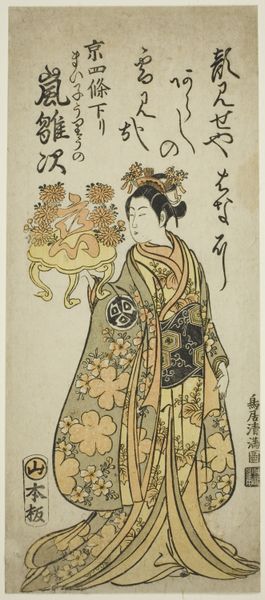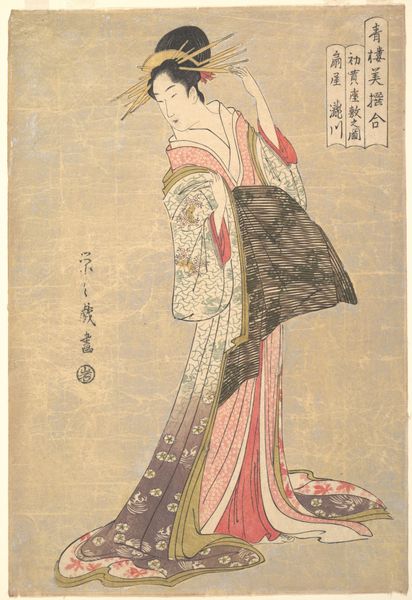
#
portrait
# print
#
asian-art
#
ukiyo-e
#
figuration
Dimensions: H. 14 7/8 in. (37.8 cm); W. 9 3/4 in. (24.8 cm)
Copyright: Public Domain
Editor: This is Yanagawa Shigenobu’s “Konami of Kurahashi-ya,” a print made sometime between 1815 and 1835. The figure is so elegant, especially the flowing lines of her kimono. How might we understand this piece beyond its aesthetic appeal? Curator: It's crucial to consider the materiality of Ukiyo-e prints like this one. Think about the woodblocks used to create the image. The process was intensely collaborative, involving the artist, block carvers, and printers. The cost and accessibility of those materials defined who could create and consume such images. Who would commission such work, and for what purpose? Editor: That's a great point. So the materials used, like the paper and inks, reflect broader economic realities? Curator: Exactly. High-quality paper signaled wealth and status. The dyes used— were they locally sourced or imported? Each element reflects a web of trade and consumption. Notice how the intricate patterns on Konami’s kimono demand highly skilled artisans. This image normalizes a culture of immense, and quite visible, material labor and class division. How might this depiction participate in existing social structures? Editor: So the image, in its material form and subject, reinforces certain social norms of its time. This wasn't simply art for art's sake. Curator: Precisely. Think about the subject matter – a courtesan. Consider how the image might have functioned within the pleasure districts. Was it advertisement? Propaganda? An aspirational lifestyle snapshot? It all hinges on understanding the conditions of production and consumption. Editor: It’s amazing how analyzing materials and process opens up the meaning behind the image! I now see the Ukiyo-e print as more than just a beautiful picture.
Comments
No comments
Be the first to comment and join the conversation on the ultimate creative platform.
